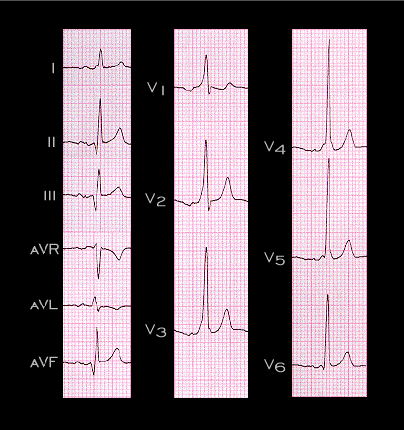
The delta wave in this tracing is negative in leads II,III and aVF, and positive in leads V1-V3. The bypass tract was in located posteriorly and on the left. The negative delta waves in leads II, III and aVF simulate the Q waves of a prior inferior wall myocardial infarction. This is referred to as a “pseudo-infarction pattern”, and the reader must be careful not to misinterpret the tracing.
